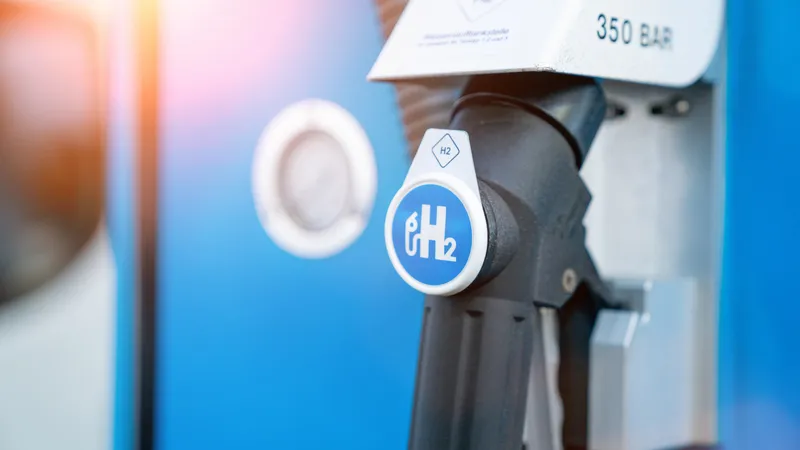Vehicle emissions regulations for 2025 and 2030 are unlikely to be met by conventional vehicle technology as applied to most vehicles beyond small cars, according to IDTechX researchers. Going to strong hybrid and pure electric powertrains involves considerable expense and delay and often totally new platforms.
However, an intermediate technology has reached a stage where it can incrementally improve traditional powertrains by replacing the alternator with a reversible 48 V electric machine and adding a
April 13, 2017
Read time: 3 mins
Vehicle emissions regulations for 2025 and 2030 are unlikely to be met by conventional vehicle technology as applied to most vehicles beyond small cars, according to IDTechX researchers. Going to strong hybrid and pure electric powertrains involves considerable expense and delay and often totally new platforms.
However, an intermediate technology has reached a stage where it can incrementally improve traditional powertrains by replacing the alternator with a reversible 48 V electric machine and adding a larger battery that is at 48V not the 12V of a car or 24V of a bus or truck though, for now, these are retained. Much more of the braking energy can be regenerated. The electric machine can provide torque boost, facilitating considerable downsizing and down-speeding of the internal combustion engine, which6582 IDTechEx calls the 48V mild hybrid. Not only will it definitely allow all cars, trucks and buses to meet the impending regulations, it can be incrementally improved with new parts such as electric superchargers, pumps, air conditioning etc. The improvements - new forms of which are being announced all the time - permit the 48V mild hybrid to have increased acceleration, quiet start stop, near-silent electric take-off and other improved driver experiences stealing the clothes of strong hybrids, all at less than half the cost and effort.
The new research report from IDTechEx, Mild Hybrid 48V Vehicles 2017-2027, provides a global up-to-date view of this fast-moving subject. The multilingual PhD level IDTechEx analysts have travelled intensively in 2016 and 2017 to report the latest research, conferences and expert opinions and to analyse how the markets and technologies will move over the coming 15 years. Original IDTechEx tables and infographics pull together the analysis.
Mild Hybrid 48V Vehicles 2017-2027 embraces market forecasts for 48V systems in cars and for the different types of electric car which compete with 48V systems to replace conventional cars. For clarity, many infographics are presented. This is analysis by experts, not simply a consolidation of information out there. The new, original figures for the addressable market for 48V cars are plotted alongside the figures likely to be achieved for this period. The 48V technology roadmap by IDTechEx is put in context by overall electric vehicle technology trends in infographics. Based on Volkswagen methodology, the four generations of 48V system are scoped in time this extra information from IDTechEx giving a wider opportunity than that normally addressed. For example, many forms of multiple energy harvesting and recuperation will be enabled.
The report includes a technology analysis with a look at the synergy with 48V pure electric powertrains. The widening range of 48V parts being added to the basic 48V systems is investigated as they progress towards 48V alone. The relevance to small versus large cars and premium versus mainstream cars is clarified by year then the progress with the different building blocks is examined in depth. In particular, the reversible torque assisting motor generator is examined, comparing the different options being pursued such as permanent magnet versus switched reluctance synchronous and the option of asynchronous.
However, an intermediate technology has reached a stage where it can incrementally improve traditional powertrains by replacing the alternator with a reversible 48 V electric machine and adding a larger battery that is at 48V not the 12V of a car or 24V of a bus or truck though, for now, these are retained. Much more of the braking energy can be regenerated. The electric machine can provide torque boost, facilitating considerable downsizing and down-speeding of the internal combustion engine, which
The new research report from IDTechEx, Mild Hybrid 48V Vehicles 2017-2027, provides a global up-to-date view of this fast-moving subject. The multilingual PhD level IDTechEx analysts have travelled intensively in 2016 and 2017 to report the latest research, conferences and expert opinions and to analyse how the markets and technologies will move over the coming 15 years. Original IDTechEx tables and infographics pull together the analysis.
Mild Hybrid 48V Vehicles 2017-2027 embraces market forecasts for 48V systems in cars and for the different types of electric car which compete with 48V systems to replace conventional cars. For clarity, many infographics are presented. This is analysis by experts, not simply a consolidation of information out there. The new, original figures for the addressable market for 48V cars are plotted alongside the figures likely to be achieved for this period. The 48V technology roadmap by IDTechEx is put in context by overall electric vehicle technology trends in infographics. Based on Volkswagen methodology, the four generations of 48V system are scoped in time this extra information from IDTechEx giving a wider opportunity than that normally addressed. For example, many forms of multiple energy harvesting and recuperation will be enabled.
The report includes a technology analysis with a look at the synergy with 48V pure electric powertrains. The widening range of 48V parts being added to the basic 48V systems is investigated as they progress towards 48V alone. The relevance to small versus large cars and premium versus mainstream cars is clarified by year then the progress with the different building blocks is examined in depth. In particular, the reversible torque assisting motor generator is examined, comparing the different options being pursued such as permanent magnet versus switched reluctance synchronous and the option of asynchronous.








